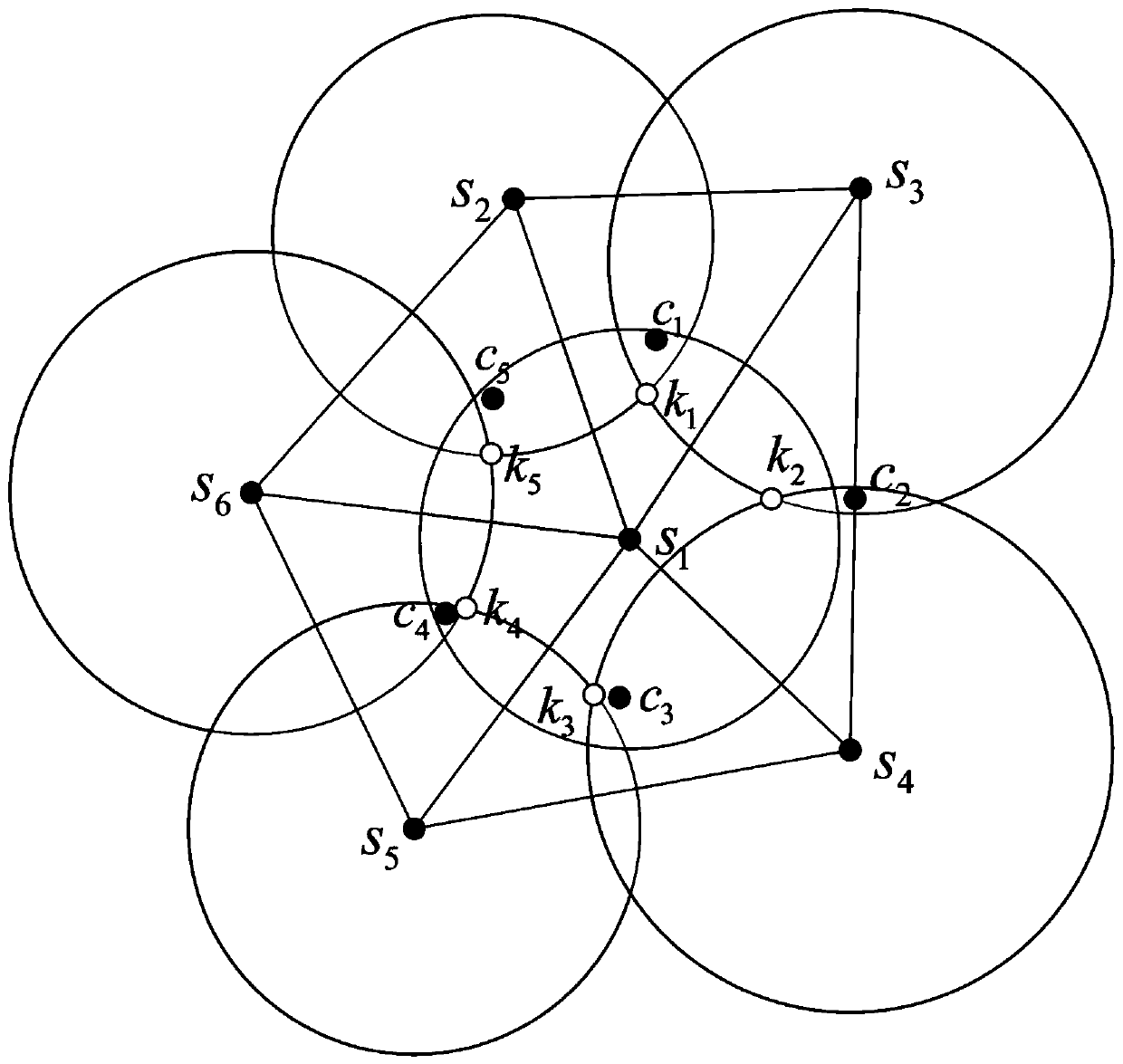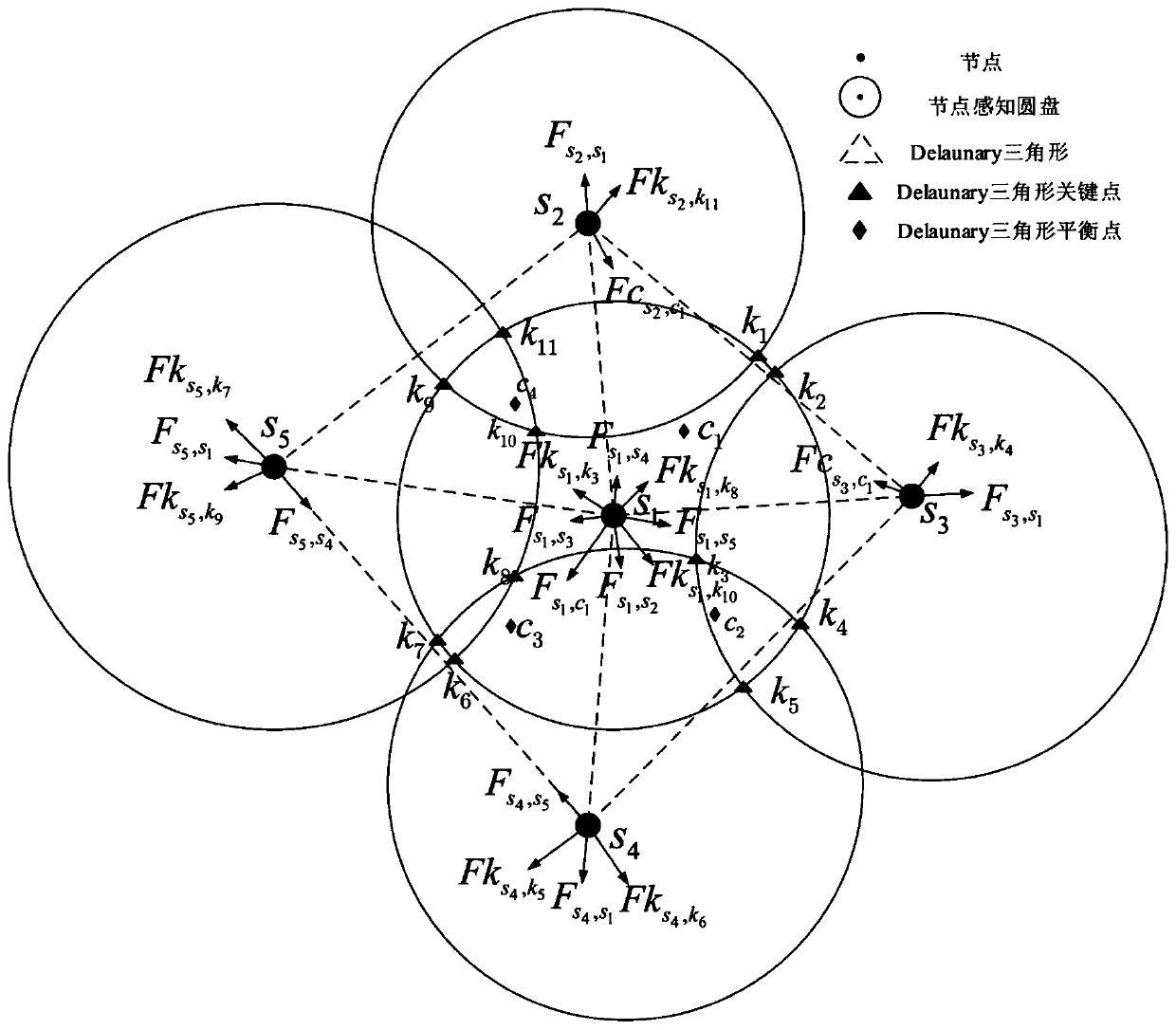Node scheduling optimization method for random heterogeneous sensor network
A sensor node and sensor network technology, applied in the field of sensor networks, can solve problems such as uneven node deployment, low network coverage efficiency, and high node density
- Summary
- Abstract
- Description
- Claims
- Application Information
AI Technical Summary
Problems solved by technology
Method used
Image
Examples
Embodiment 1
[0057] This embodiment provides a node scheduling optimization method for random heterogeneous sensor networks based on virtual nodes and Delaunary subdivision, which uses the force of the triangle equilibrium point on the node to speed up the update of the initial state of the node; defines the triangle key point to the node It enhances the local search ability of nodes and makes the deployment of nodes more accurate; uses virtual nodes to construct binary codes of key points, and processes edge nodes to avoid invalid coverage of nodes outside the boundary. The algorithm can effectively adjust the topology of network nodes, maximize the use of node coverage capabilities, and strive to achieve full coverage of the network.
[0058] Specifically, considering the heterogeneity of nodes in the sensor network, necessary simplification of the network scene model is required. In this application, without loss of generality, the following assumptions are made about network scenarios ...
Embodiment 2
[0129] This embodiment provides an application of the node scheduling optimization method for random heterogeneous sensor networks based on virtual nodes and Delaunary subdivision described in Embodiment 1 in the monitoring of cyanobacteria in Taihu Lake;
[0130] To monitor cyanobacteria, it is first necessary to spread the sensors on the water surface. After a period of water fluctuations, the positions of the sensors will change randomly. At this time, the random pair based on virtual nodes and Delaunary subdivision described in the first embodiment is used. The node scheduling optimization method SAVSH of the heterogeneous sensor network re-deploys the sensors, which can achieve the effect of optimizing the coverage of the water surface area.
[0131] In order to verify the advantages of the method proposed in this application, a simulation experiment is carried out as follows: The default configuration of the main network parameters is shown in Table 2:
[0132] Table 2 N...
PUM
 Login to View More
Login to View More Abstract
Description
Claims
Application Information
 Login to View More
Login to View More - R&D
- Intellectual Property
- Life Sciences
- Materials
- Tech Scout
- Unparalleled Data Quality
- Higher Quality Content
- 60% Fewer Hallucinations
Browse by: Latest US Patents, China's latest patents, Technical Efficacy Thesaurus, Application Domain, Technology Topic, Popular Technical Reports.
© 2025 PatSnap. All rights reserved.Legal|Privacy policy|Modern Slavery Act Transparency Statement|Sitemap|About US| Contact US: help@patsnap.com



